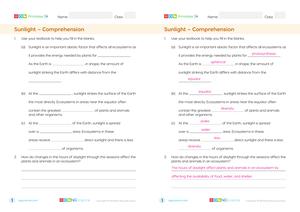Begin the lesson with an engaging discussion on the importance of ecosystems and how both living (biotic) and non-living (abiotic) factors contribute to their balance.
Go to the LessonLearning Objectives
- Identify and differentiate between biotic and abiotic factors in an ecosystem.
- Explain how biotic factors such as plants and animals interact and affect each other in an ecosystem.
- Describe the role of abiotic factors like water, sunlight, temperature, and soil in supporting biotic factors.
- Analyze how changes in biotic or abiotic factors can impact the overall functioning of an ecosystem.
Introduction and Hook
Direct Instruction
Introduce biotic and abiotic factors using examples from various ecosystems, such as forests and deserts. Highlight how these factors interact and support each other.
Guided Exploration
Watch the video 'Abiotic Factors in Ecosystems – Water' to explore the role of water in ecosystems, emphasizing its impact on plant photosynthesis and organism diversity.
Engage students in identifying biotic and abiotic factors in their local environment and discuss how they interact.
Hands-On Activity
Conduct a classroom activity where students classify various items as biotic or abiotic and explain their roles in an ecosystem.
Independent Practice
Assign students to research and present on a specific ecosystem, identifying its biotic and abiotic factors and their interactions.
Check for Understanding
Facilitate a class discussion to review key concepts and ask students to provide examples of how changes in abiotic factors can affect biotic components.
Review and Reflection
Reflect on the importance of maintaining balance in ecosystems and discuss human impacts on biotic and abiotic factors.
Assessment and Extension
Administer the 'Sunlight – Comprehension' assessment to evaluate students' understanding of sunlight as an abiotic factor.
Encourage students to explore further by researching the impact of climate change on abiotic factors and presenting their findings.
Try the Quiz



